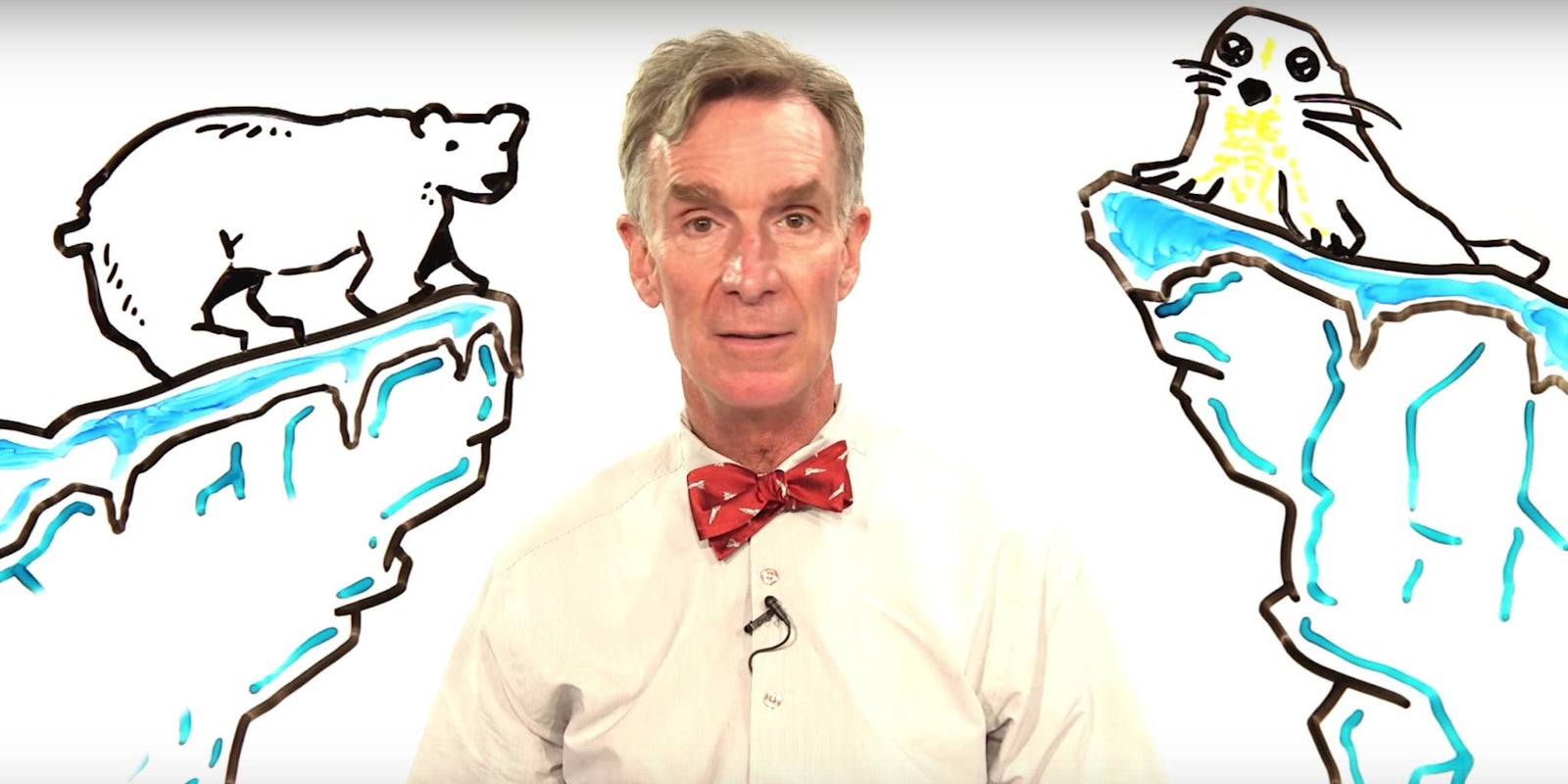Understanding climate change is vexing for most people. It’s complicated and happens on a large scale, and yet it moves at a seemingly glacial pace—at least by human standards. (It’s happening very, very fast in geologic scale.)
Luckily an ace team of science communicators: Mitchell Moffit and Gregory Brown of AsapSCIENCE and Bill Nye can break it down for you in about five minutes. Instead of tackling the whole of climate change, they focused on what will happen as sea ice melts—and it’s much more than the demise of polar bears.
In short, if all the world’s ice melted it would disrupt the ocean currents that help keep alive the plant life that produces the vast majority of oxygen. We’d see ever-warming temperatures that only lead to even warmer temperatures as ice on land melts into the sea, and the rising ocean levels would threaten to displace nearly a billion people and submerge major cities. Those shifts in regional climates would, in turn, threaten how we produce food.
And those are just a few of the ways melting sea ice affects people, nevermind the way it will affect the rest of life that depends on Earth’s temperate climate.
The video was born out of Moffit and Brown’s recent trip up to the Arctic Circle in Canada to see melting sea ice—and the disruption of the human communities and wild ecosystems that live there.
Depending on who you ask, we are either right up against or already past the point of no return with climate change. Without significant cutbacks in greenhouse gas emissions, the planet and our lives as we know them are doomed to radical, and quite possibly catastrophic, change.


